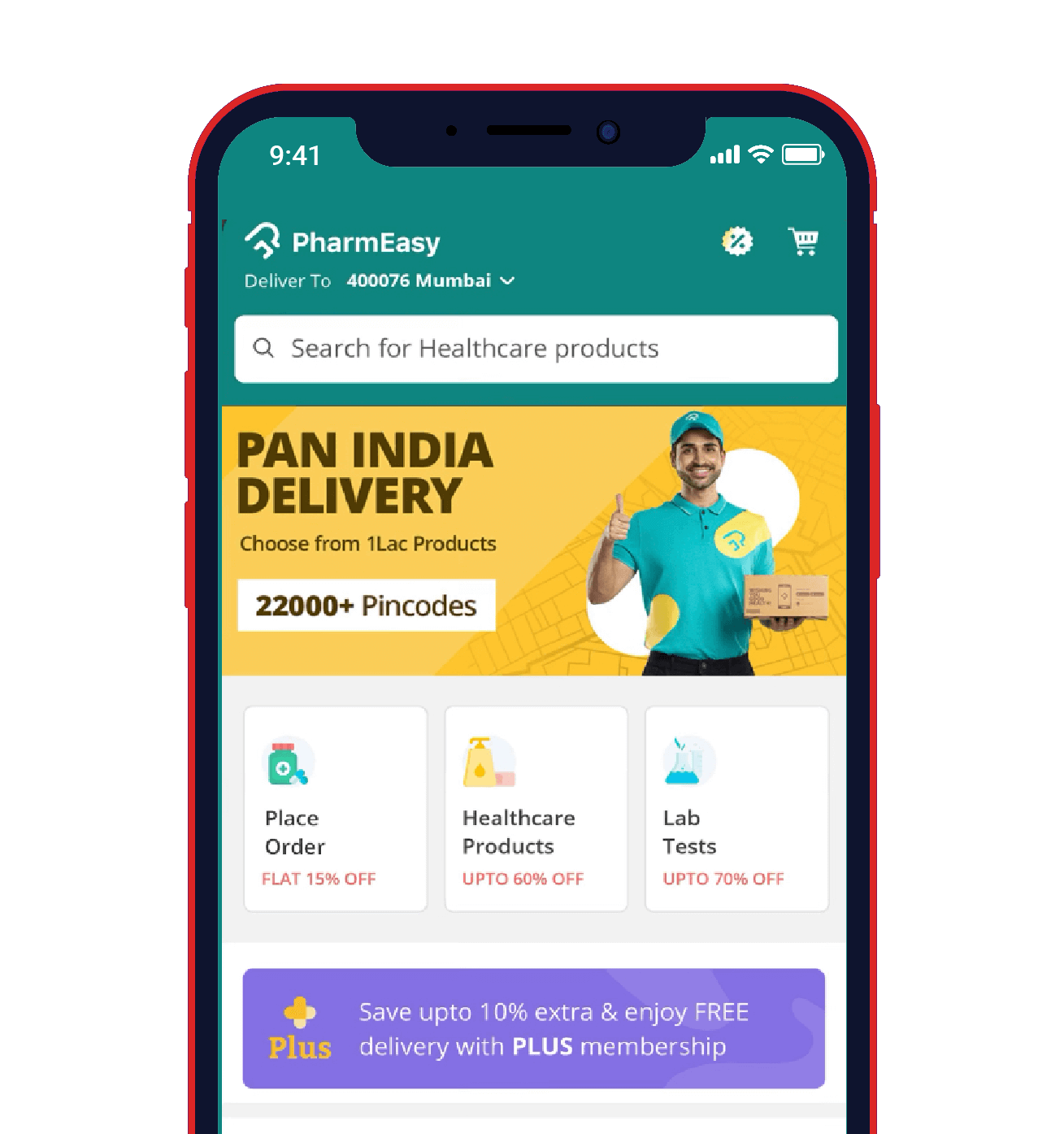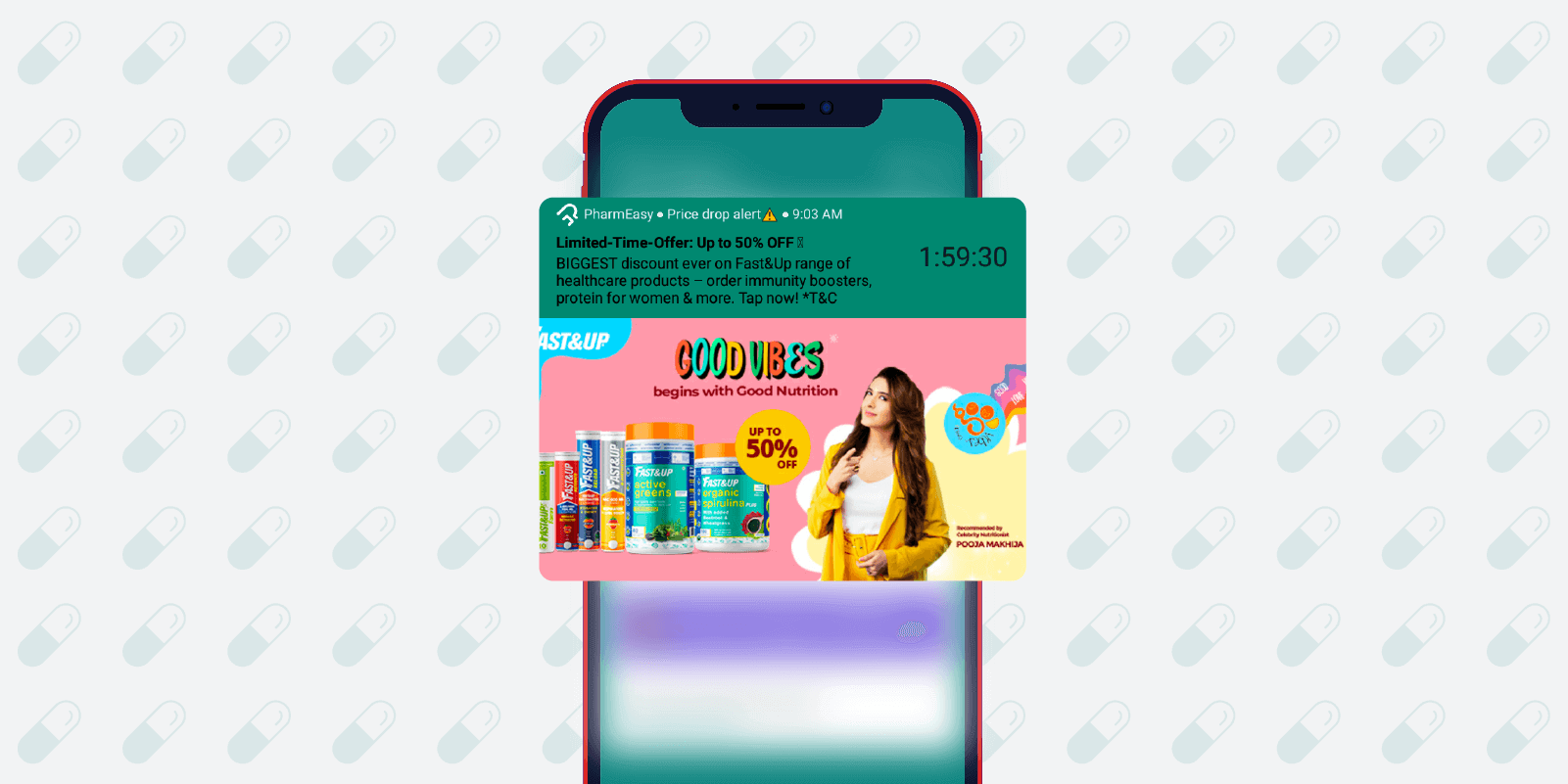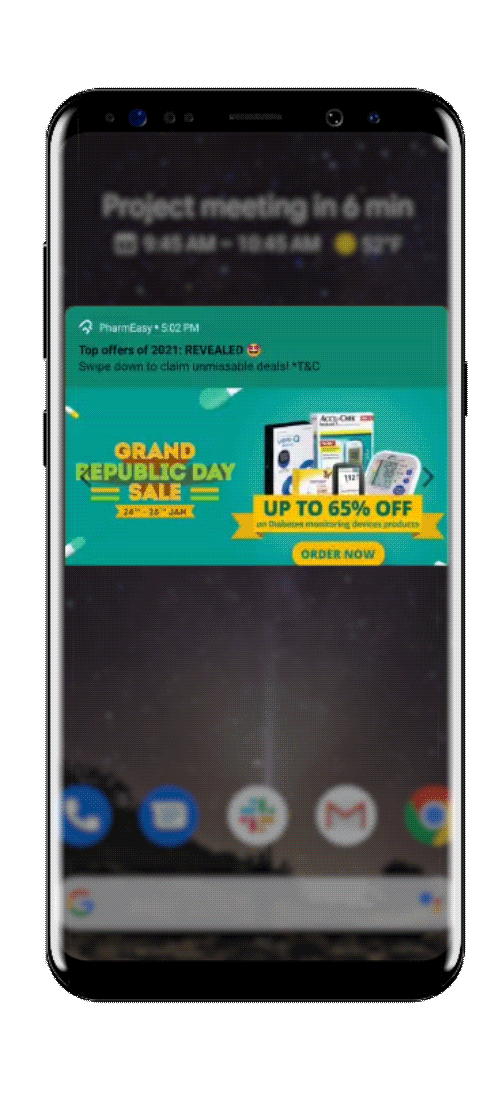
The second wave of COVID-19 has brought on the biggest healthcare challenge India has ever faced. With high caseloads and a shortage of oxygen, vaccines, and life-saving medicines, a palpable sense of fear is ever-present. And the barrage of misinformation transmitted through messaging platforms only makes this situation all the more dire.
The pervasive sense of alarm is easily detectable in online searches for masks, oximeters, and sanitizers. PharmEasy, India’s leading online pharmacy platform, has taken it upon itself to build awareness and deliver essential medicines with just a click—hopefully thus providing some relief to a distraught nation.
The PharmEasy Story
Serial entrepreneurs Dharmil Sheth and Dr. Dhaval Shah joined forces back in 2015 to disrupt India’s healthcare industry by launching PharmEasy. Their mission was to make healthcare accessible and affordable to all. The app’s portfolio of products and services includes prescription medications, healthcare products, medical equipment, and diagnostic tests. Currently, they deliver medicines to 1,000+ cities and provide diagnostic tests in 40+ cities.
Challenges
-
 Reducing Shopping Cart Abandonment
Reducing Shopping Cart Abandonment -
 Personalizing the User Experience
Personalizing the User Experience -
 Reducing User Drop-Offs
Reducing User Drop-Offs
Reducing Shopping Cart Abandonment
Shopping cart abandonment is the bane of every ecommerce marketer’s existence. A recent study conducted by Baymard Institute found that the average cart abandonment rate stands at a discouraging 70%.
Online pharmacies are not immune to cart abandonment. By making every abandoned cart and search into an engagement opportunity, PharmEasy is able to turn the tide in their favor.
Personalizing the User Experience
To boost engagement and subsequent conversions, it was important for them to reach the customers with content targeted to their specific behaviors and preferences. For this, they need to fully understand who their users are and what they do in the app.
Reducing User Drop-Offs
Understanding the details of the user’s journey and what makes them convert or drop-off at each stage of the funnel was important for the team. This would help them craft effective campaigns targeted to reduce drop-offs.
Solution
To understand how PharmEasy powers its engagement strategy through CleverTap, we spoke to two members from their CRM team: Arjun Malhotra, and Pooja Suvarna. The CRM team is responsible for planning, executing, and analyzing customer journeys and campaigns.
Some of their key metrics include:
Number of orders placed
Average Order Value
Gross Value Merchandise
Number of new installs
Number of registrations
Number of reactivations
Audience Segmentation to Precisely Target Various User Groups
CleverTap’s powerful segmentation engine allows them to group users into segments, using a combination of events and user properties to define each one. This segmenting helps them focus their messaging on each group of users’ specific needs or status, which helps them achieve their engagement and retention goals.
At PharmEasy, users are segmented based on:
Order Fulfilment Status: Whether a customer has fulfilled an order or not determines if they are categorized as new or old users. These segments are further divided based on event properties. For example, segments are created for users who have registered but haven’t placed an order or users who’ve placed an order but are awaiting fulfillment.
Activity Status: Activity status is defined according to how recently the user has been active. If an old user hasn’t placed an order in 60 days, the user is classified as inactive.
Purchase value: Event properties like average order value (AOV) and the number of orders delivered form define their high-purchase users. To support the retention of these power users, PharmEasy recently launched a loyalty program to specifically target this segment and ensure their retention.
Journeys to Engage With Users Across the Lifecycle
With journeys, PharmEasy delivers a seamless brand experience leveraging messaging channels like push notifications (mobile and web), SMS, email, and pop-ups (mobile and web).
“Every customer is on at least one journey from the time they install the app until they’ve been inactive for around 100 days,” adds Suvarna. New users are a part of their onboarding journey which takes users from the moment they install the app until they register and subsequently place an order.
Repeat users are added to their respective therapy-specific journeys. This adds a layer of personalization to the overall experience. For example, if a user has purchased medicine for diabetes, they will be added to a journey focused on diabetology. These users will receive diabetes-specific communication comprising information about medications and over-the-counter options, diabetes tests, and blog posts about the condition.
They’ve also created cancellation and rejection journeys where they prompt users to place an order again if it was canceled by the user or rejected by PharmEasy. This journey has boosted their 24-hour retention rate.
Push Templates to Create Notifications That Stand Out
“Push templates have been very helpful for us. We have tried experimenting with a few of these templates, and they’ve worked well for us,” said Suvarna when asked about how they create notifications that drive instant action.
One of the templates that have worked well for them is the ‘Timer template.’ It helps them drive conversions by creating a sense of urgency. They use this template in situations where a sale is about to end or the user’s wallet money is about to expire.

Timer template used by PharmEasy
Other templates include ‘Auto Carousel’ and ‘Manual Carousel’ which the team uses when they want to show multiple offers at the same time or multiple products in the same notification.

Manual carousel template used by PharmEasy
Trigger Campaigns to Automate Engagement and Boost Conversions
The CRM team relies on trigger campaigns due to their effectiveness in making the user experience more intuitive, interactive, and personalized. “We run many trigger campaigns, and these result in high engagement and conversion rates. Our two main campaigns are cart abandonment and search abandonment,” said Malhotra.
A cart abandonment campaign is triggered when a user adds to the cart and doesn’t complete their purchase. The messaging sent to the user is personalized and specific to the product in the cart. A search abandonment campaign is triggered when a user searches for a product but doesn’t add it to their cart. The messaging reassures the customer about the availability of the product and prompts them to complete the purchase.
In recent times, they’ve run trigger campaigns around COVID-19 search terms. Those customers who search on COVID-19 related keywords receive a pop-up message about PharmEasy’s doctor consultation program which can help address the user’s questions or concerns.
Results
The CRM team at PharmEasy has seen their campaign CTRs jump by 10x using push templates. “Using CleverTap, we have greatly improved our CTRs. Our push notifications are more effective since we started using push templates, and similarly, our email campaigns have been running well and producing meaningful results,” mentions Malhotra. Trigger campaigns for cart and search abandonment has led to a 1.5-2x increase in direct conversions.
What’s next?
The second wave of COVID-19 is still ongoing in India at the time of this writing, resulting in a huge surge in orders for PharmEasy. As a medical provider, the company feels a definite sense of social responsibility, especially at this critical time. They’ve increased the number of awareness campaigns on social media and have seen a good customer response.
They also launched a state-wide communication campaign where they send state-specific lockdown rules, COVID-19 toll numbers, and information about the availability of vaccine appointments. Under their COVID-Free India initiative, they’ve set-up up RT-PCR test pods in cities like Mumbai and Delhi.
Recently, PharmEasy acquired Medlife, to become India’s largest online healthcare platform. This acquisition aids their mission to support a more robust healthcare system in India and make healthcare accessible to everyone.







 Arjun Malhotra
Arjun Malhotra  Pooja Suvarna
Pooja Suvarna